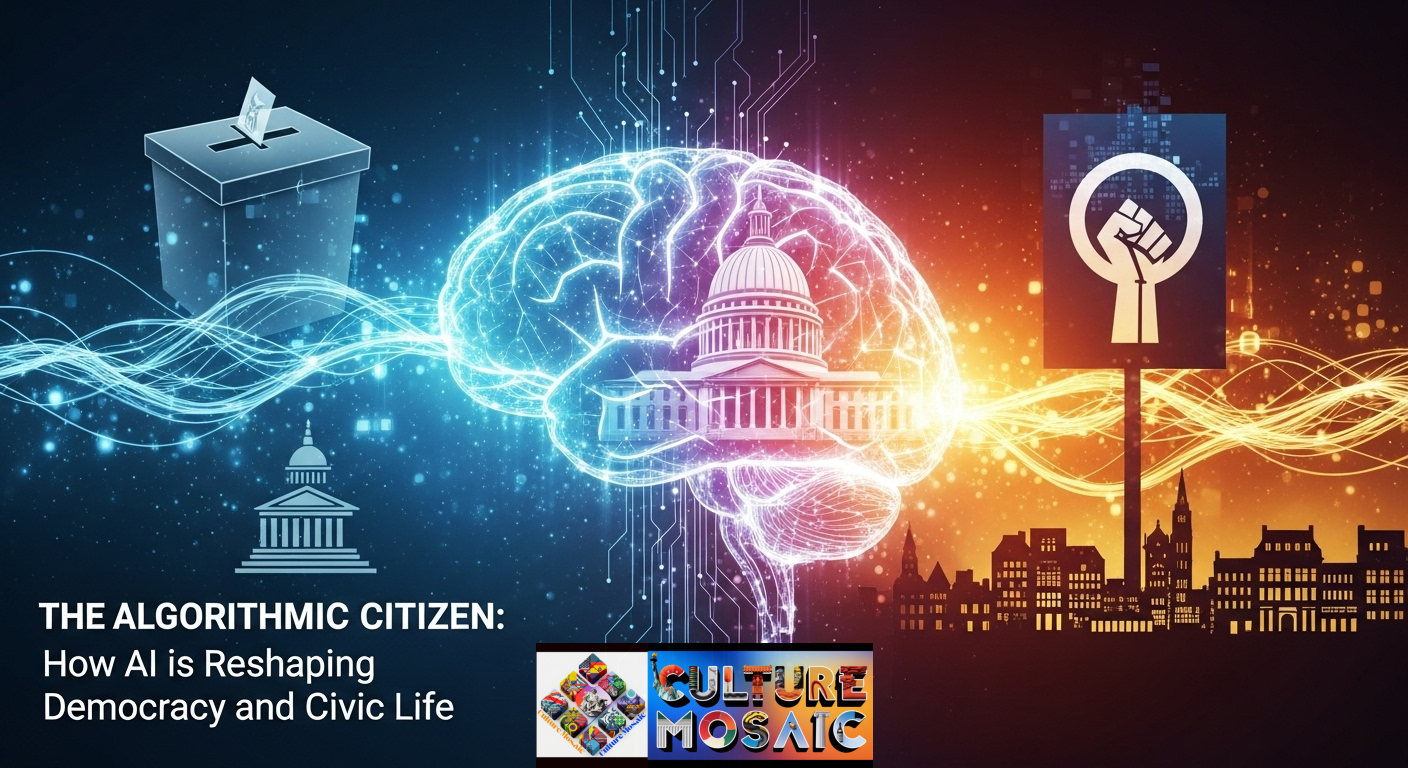Understanding Civic Life in the Age of Artificial Intelligence
Civic life—the space where citizens engage with their communities, governments, and each other—is undergoing a profound transformation. As artificial intelligence weaves itself into the fabric of democracy, we’re witnessing a fundamental shift in how people participate in civic life, access information, and hold institutions accountable.
The relationship between AI and civic life isn’t just a technological story. It’s deeply human. From the voter in Mumbai using a chatbot to report potholes to the activist in São Paulo organizing protests through AI-enhanced platforms, technology is redefining what it means to be an engaged citizen in the 21st century.
How AI is Transforming Traditional Civic Life Structures
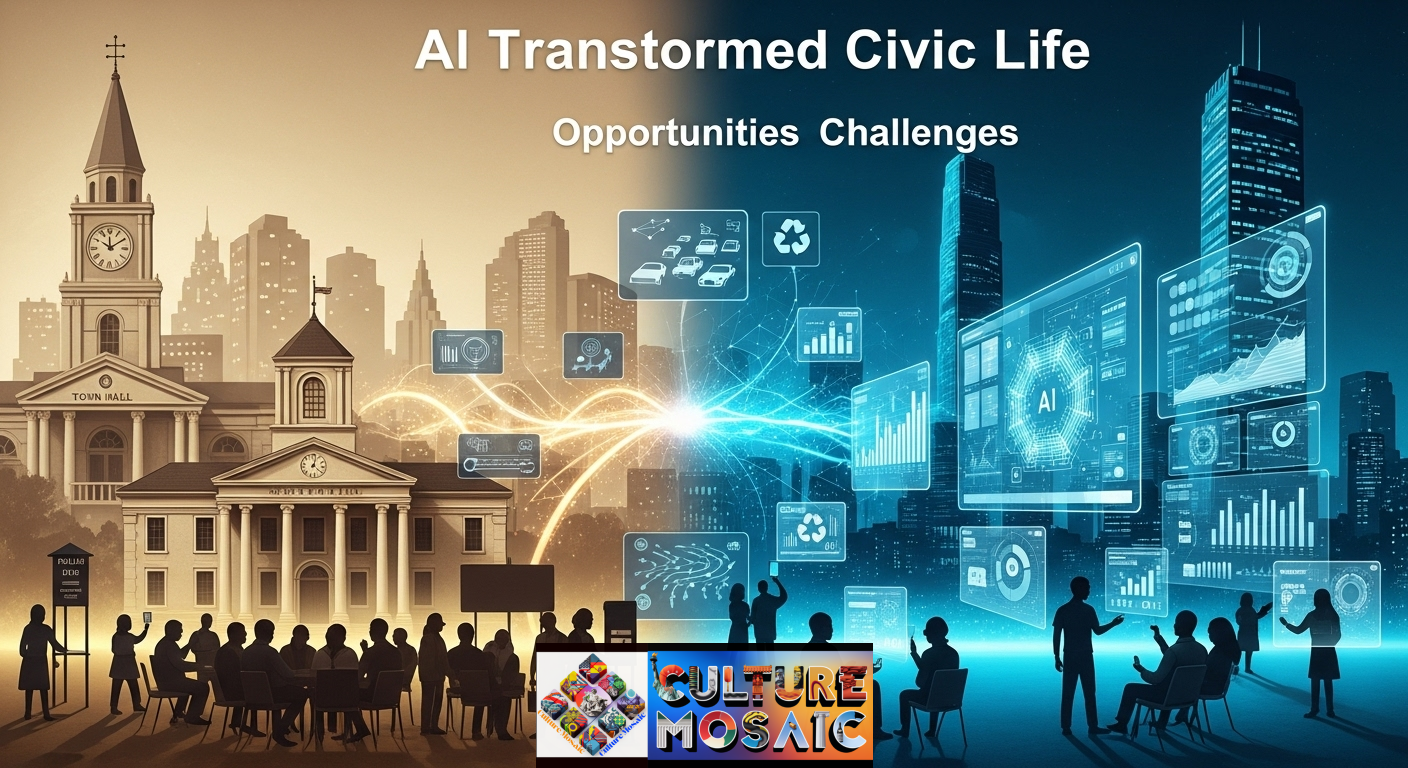
Traditional civic life revolved around physical spaces—town halls, polling stations, community centers. Today, algorithms curate our political news feeds, AI systems process citizen complaints, and machine learning models predict everything from traffic patterns to public health crises.
This digital transformation of civic life presents both opportunities and challenges. Smart city initiatives in Barcelona use AI to optimize public services, improving the quality of civiclife for residents. Meanwhile, concerns about algorithmic bias and surveillance threaten the very foundations of democratic civiclife.
The integration of AI into civic life infrastructure means that governments can respond faster to citizens’ needs. Emergency services use predictive algorithms to allocate resources. Transportation departments employ machine learning to reduce congestion. Environmental agencies deploy AI to monitor pollution and protect public health—all essential components of modern civiclife.
The Evolution of Democratic Participation in Digital Civic Life
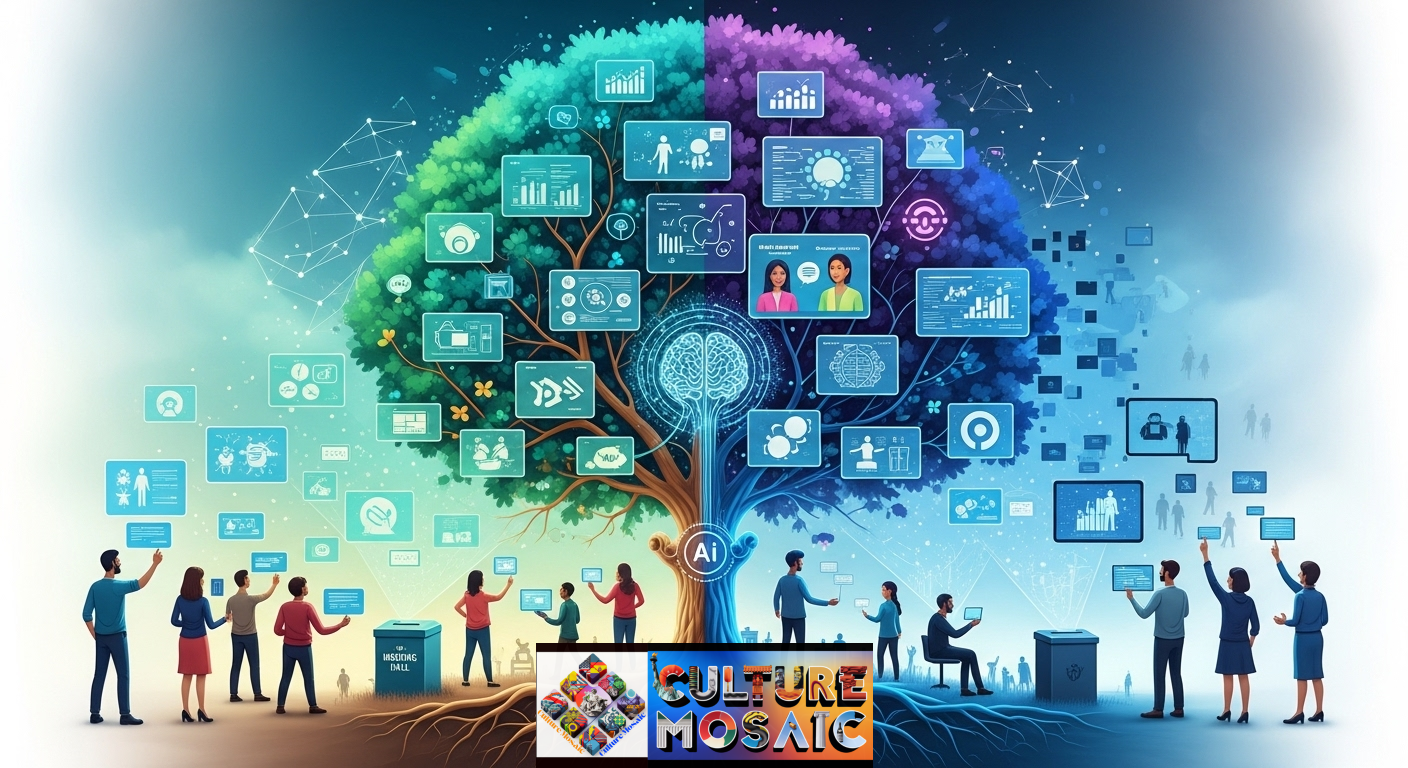
Civic life has always been about participation, but AI is changing the rules of engagement. Digital platforms powered by artificial intelligence enable unprecedented levels of citizen involvement in democratic processes.
Consider Taiwan’s vTaiwan platform, where AI helps synthesize thousands of citizen opinions into coherent policy proposals. This represents a new model for civiclife—one where technology amplifies rather than replaces human deliberation. Citizens propose ideas, AI identifies common ground, and policymakers gain clearer insight into public sentiment.
However, this evolution of civic life isn’t without controversy. When social media algorithms determine which political content reaches voters, who controls the conversation? When AI-powered microtargeting shapes campaign messages, does it enhance democratic civiclife or manipulate it?
The quality of civic life in democratic societies depends on informed citizens making genuine choices. AI can facilitate this by making information more accessible and the government more transparent. But it can also create echo chambers, spread disinformation, and fragment the shared reality that healthy civic life requires.
AI and Elections: The New Battleground for Civic Life
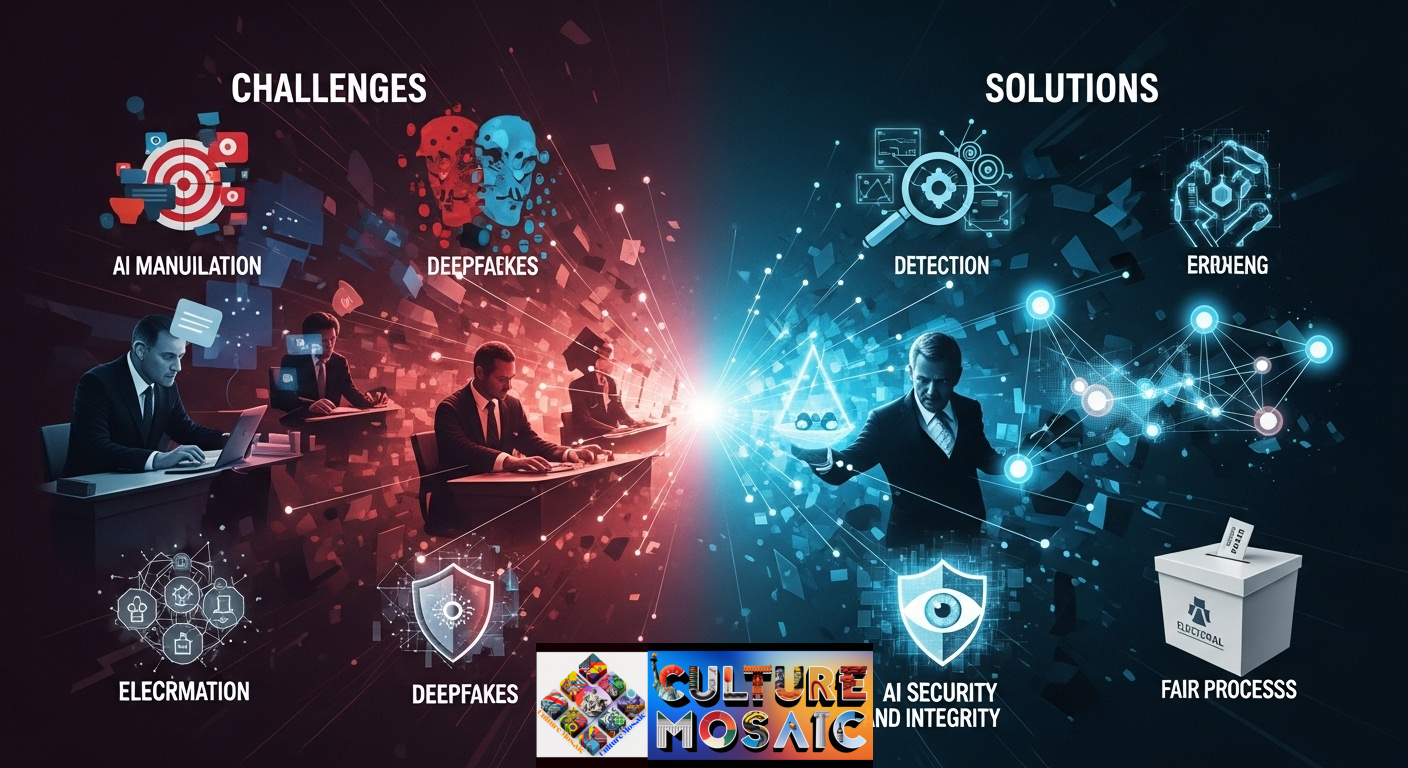
Elections represent civic life at its most crucial. They’re where citizens exercise their fundamental democratic right to choose their leaders. AI is transforming every aspect of this process.
Campaign strategies now rely heavily on AI analytics to identify persuadable voters and craft targeted messages. While this can make campaigns more efficient, it raises questions about the authenticity of civic life. Are voters engaging with genuine political discourse or responding to AI-optimized manipulation?
Deepfake technology poses an existential threat to electoral civic life. When voters can’t trust what they see or hear, the foundation of democratic choice crumbles. A deepfake video of a candidate saying something inflammatory could spread across social media hours before an election, with AI amplifying its reach before fact-checkers can respond.
Yet AI also offers solutions. Machine learning systems can detect deepfakes, identify bot networks spreading disinformation, and help election officials secure voting infrastructure. Estonia’s e-voting system, protected by advanced cybersecurity AI, demonstrates how technology can enhance rather than undermine civiclife.
The European Union’s AI Act attempts to regulate high-risk AI applications in civiclife, including those affecting democratic processes. This regulatory divergence will shape the future of civic life globally, creating different standards for how AI can be used in democratic contexts.
Information Integrity: Protecting Truth in Civic Life
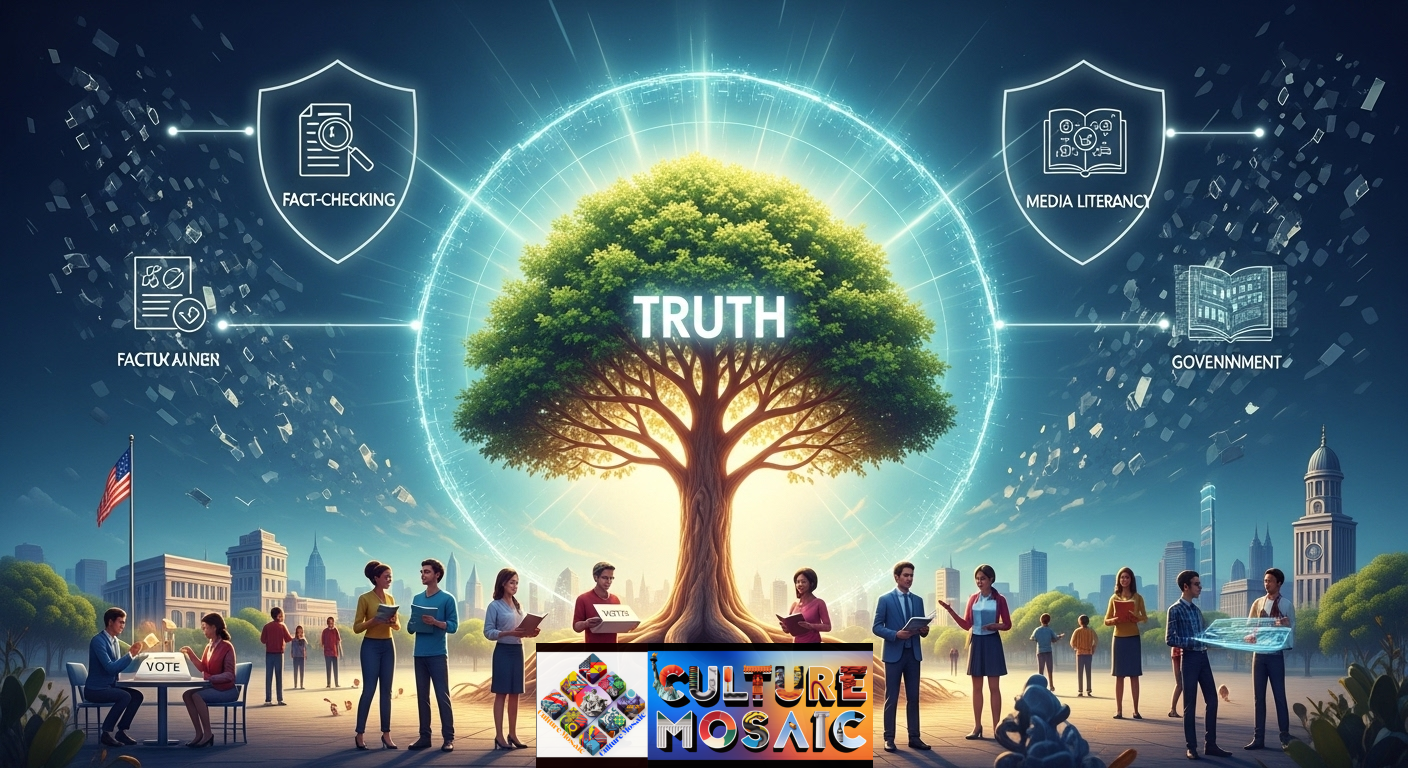
Civic life depends on a shared understanding of reality. Citizens need accurate information to make informed decisions about their communities and the governments that govern them. AI disrupts this in profound ways.
Generative AI can produce convincing fake news articles, fabricated scientific studies, and synthetic media that looks entirely authentic. When civic life operates on false information, democracy itself becomes unstable. The challenge isn’t just technological—it’s epistemological. How do citizens know what’s real?
Some countries are developing AI-powered fact-checking systems to protect civiclife from disinformation. Taiwan’s approach combines human expertise with machine learning to rapidly identify and counter false narratives. The goal isn’t censorship but inoculation—helping citizens develop resilience against manipulation.
Media literacy becomes essential for civic life in the AI age. Citizens need to understand how algorithms work, recognize AI-generated content, and critically evaluate the sources they encounter. Schools in Finland teach these skills from an early age, treating digital literacy as fundamental to civic life as reading and writing.
Government transparency also matters. When public institutions use AI to make decisions affecting civic life—determining who gets social services, predicting crime hotspots, or allocating educational resources—citizens have a right to understand how these systems work and challenge their outcomes.
Surveillance, Privacy, and the Future of Civic Life
Civic life requires space for dissent, organization, and free expression. But AI-powered surveillance threatens these freedoms in ways previous technologies never could.
Facial recognition systems can identify protesters at demonstrations. Predictive policing algorithms disproportionately target marginalized communities. Social credit systems—already implemented in some countries—use AI to monitor and control citizen behavior, fundamentally altering the nature of civic life.
From London to Lagos, cities deploy AI surveillance in the name of public safety. The technology can help solve crimes and prevent terrorism. But it also enables unprecedented monitoring of civic life, chilling free speech and association. When citizens know they’re being watched, they behave differently—often less freely.
The balance between security and liberty defines democratic civic life. Different societies draw this line differently, but AI makes the stakes higher. Unlike human surveillance, AI systems can track millions of people simultaneously, remember everything, and detect patterns humans would miss.
Civil liberties organizations argue that protecting civic life means restricting AI surveillance. They advocate for bans on facial recognition in public spaces, strong data protection laws, and strict limits on how governments can use AI to monitor citizens. The outcome of these debates will determine what kind of civic life future generations inherit.
The Global Digital Divide and Equitable Civic Life
Not everyone experiences AI’s impact on civic life equally. The digital divide—already a significant barrier to full civic participation—grows wider as AI becomes more central to democratic life.
In wealthy nations, citizens increasingly interact with government through AI-powered services. They report problems through smart city apps, access information via government chatbots, and participate in digital consultations. This represents an evolution of civic life toward greater convenience and efficiency.
But in regions lacking digital infrastructure, AI’s benefits remain inaccessible. Citizens without smartphones or internet connections find themselves excluded from new forms of civic life. Even within developed countries, elderly populations and marginalized communities often lack the digital literacy needed to navigate AI-powered civic systems.
This inequality threatens the universality that defines democratic civic life. When some citizens can easily access services, information, and participation opportunities while others cannot, society fractures into digital haves and have-nots.
However, AI also offers opportunities for leapfrogging traditional development paths. African tech hubs are using AI to address local challenges—from agricultural planning to healthcare delivery—often with more innovative approaches than wealthy nations. These solutions could enhance civic life in ways that don’t simply replicate Western models.
The key is ensuring AI development serves all communities, not just privileged ones. This means investing in digital infrastructure, prioritizing inclusive design, and ensuring civic life remains accessible regardless of technological sophistication.
Grassroots Movements and AI-Enhanced Civic Life
Some of the most exciting developments in civic life come from citizens themselves using AI to organize and advocate for change. Grassroots movements leverage AI tools to mobilize supporters, coordinate actions, and amplify their voices.
During protests in Hong Kong, demonstrators used AI-enhanced apps to avoid police surveillance and coordinate movements in real-time. Climate activists employ machine learning to analyze corporate environmental records and hold polluters accountable. Labor organizers use AI to identify wage theft and organize workers across dispersed locations.
This represents civic life from the bottom up—citizens appropriating powerful technologies for democratic purposes. Unlike top-down government systems, these applications of AI serve community-defined goals and operate with popular legitimacy.
Social media platforms, powered by AI algorithms, enable rapid mobilization around civic causes. The #MeToo movement, Black Lives Matter, and climate strikes all gained momentum through algorithmic amplification of grassroots voices. This demonstrates how AI can vitalize civic life by connecting people around shared concerns.
Yet the same platforms can be weaponized against civic movements. Governments use AI to infiltrate protest networks, spread counter-narratives, and identify organizers for arrest. The technology that enables civic life can also suppress it, depending on who controls the systems and how they’re deployed.
Global Governance: Regulating AI for Democratic Civic Life
As AI reshapes civic life worldwide, the question of governance becomes urgent. Who sets the rules? What values should guide AI’s role in democracy? How do we protect civic life while enabling innovation?
The European Union takes a precautionary approach with comprehensive AI regulation. The AI Act classifies applications by risk level, imposing strict requirements on systems that could affect democratic processes, human rights, or public safety. This framework aims to protect civic life by ensuring AI meets democratic values before deployment.
The United States favors a lighter regulatory touch, relying more on market forces and sector-specific rules. This approach prioritizes innovation but offers less protection for civic life against AI harms. American tech companies shape AI’s development with limited democratic oversight, raising concerns about corporate power over civic institutions.
China invests heavily in AI for governance and social management, integrating the technology deeply into civic life under state control. This model emphasizes stability and efficiency over individual rights, representing a fundamentally different vision of AI’s role in society.
These divergent approaches will shape civic life differently across the globe. As AI systems cross borders and influence spreads, the need for international cooperation grows. Democratic civic life in an AI age requires global standards that protect human rights while allowing beneficial innovation.
Building AI Literacy for Robust Civic Life
An informed citizenry is essential for healthy civiclife. In the AI age, this means understanding not just political issues but also the technologies shaping democratic processes.
Citizens need to know how recommendation algorithms influence what they see, how AI systems make decisions affecting their lives, and what rights they have regarding automated processes. Without this knowledge, meaningful participation in civiclife becomes impossible.
Educational systems must adapt. Teaching civic life in schools should include digital citizenship, AI literacy, and critical thinking about algorithmic systems. Students should learn to question AI outputs, understand bias in training data, and recognize when they’re interacting with automated systems versus humans.
Media organizations play a crucial role. Journalists need AI literacy to report accurately on technology’s impact on civiclife. They should explain how algorithms work, investigate AI system failures, and hold tech companies and governments accountable for their use of these powerful tools.
Civil society organizations can provide training and resources for community members to engage confidently with AI in civic life. Workshops on spotting deepfakes, understanding government AI systems, and using digital tools for advocacy empower citizens to participate fully in democratic processes.
The Path Forward: Reimagining Civic Life for the AI Era
Civic life stands at a crossroads. The choices we make now about AI will shape democracy for generations. We can create a future where technology enhances civic participation, makes government more responsive, and empowers citizens. Or we can stumble into a dystopia of surveillance, manipulation, and algorithmic control.
The optimistic vision sees AI as a tool for democratic renewal. Imagine a civiclife where language barriers disappear through real-time translation, where citizens with disabilities participate fully through AI-assisted technologies, and where government services adapt to individual needs while respecting privacy.
This future requires intentional design. AI systems must be built with democratic values embedded from the start. Transparency, accountability, and human oversight need to be fundamental principles, not afterthoughts. Civic life depends on trust, and trust requires that citizens understand and can challenge the systems governing them.
We must also preserve what makes civiclife meaningful—human connection, deliberation, and collective action. AI should augment these aspects of democracy, not replace them. Technology can handle data analysis and logistics, freeing humans for the creative, empathetic, and moral work that defines civic life at its best.
FAQs
How is AI currently being used in civiclife?
AI is integrated into civiclife through multiple channels: smart city systems that optimize public services, government chatbots that answer citizen questions, predictive algorithms that allocate resources, social media platforms that shape political discourse, and surveillance systems that monitor public spaces. These applications affect everything from how citizens access services to how they participate in democratic processes.
What are the biggest threats AI poses to democratic civiclife?
The primary threats include disinformation and deepfakes that undermine informed decision-making, surveillance systems that chill free expression and assembly, algorithmic bias that perpetuates discrimination in civic institutions, the digital divide that excludes some citizens from AI-enhanced civic participation, and the concentration of power in tech companies that control platforms essential to civiclife without democratic accountability.
Can AI actually improve civic engagement and participation?
Yes, when designed thoughtfully. AI can lower barriers to civic participation by making government services more accessible, enabling new forms of collective deliberation like Taiwan’s vTaiwan platform, helping citizens organize around shared concerns, providing personalized information about local issues, and increasing government transparency through data analysis. The key is ensuring these systems serve democratic values rather than corporate or authoritarian interests.
How can citizens protect themselves from AI-driven manipulation in civic life?
Citizens can develop AI literacy to recognize automated content and algorithmic influence, diversify information sources rather than relying on algorithm-curated feeds, learn to identify deepfakes and synthetic media, engage with fact-checking resources, participate in media literacy programs, support transparent and accountable AI systems in government, and advocate for regulations that protect democratic civiclife from manipulative AI applications.
What should governments do to ensure AI enhances rather than harms civic life?
Governments should establish clear regulations for high-risk AI applications in democratic contexts, require transparency in AI systems affecting civic life, invest in digital infrastructure to prevent exclusion, fund AI literacy education for all citizens, create oversight mechanisms with democratic accountability, protect privacy and civil liberties from surveillance overreach, support diverse AI development that serves public interests, and participate in international cooperation to establish democratic norms for AI governance.
The algorithmic citizen is already here. AI has become inseparable from civiclife, reshaping how we participate in democracy, access information, and relate to governing institutions. Rather than resisting this transformation, we must guide it intentionally, ensuring that civiclife in the AI era remains genuinely democratic, inclusive, and empowering. The future of democracy depends on the choices we make today about how artificial intelligence serves—or subverts—civic life.

